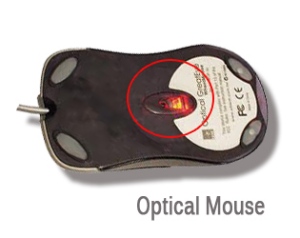Different Types of Computer Mice
23MAR
The computer mouse functions by detecting the two dimensional motion relative to the surface it is kept on. It is the motion of the mouse that converts into the motion of the cursor on the screen of the PC or laptop.
Over the years, we have seen dramatic evolution in the technological arena. Various types of mice are available in market and the selection solely depends on your requirement. Let’s take a quick look at the available options:
Mechanical Mouse
Also called as the ball mouse, a mechanical mouse has rubber or metal ball on it’s underside. When the ball rolls, mechanical sensors inside the mouse detect the direction and move the pointer on the screen of the PC. This type of mouse requires a flat surface or a mouse pad to work efficiently. One of the drawbacks of the device is that it is more prone to attracting dust.
Optomechanical or Optical-mechanical Mouse
An Optomechanical or optical-mechanical mouse is same as the mechanical mouse except that the sensors used in it are optical and not mechanical. The device is a combination of optical and mechanical technologies, wherein, the ball is present but the mouse movement is detected optically leading to more accuracy.
Laser Mouse
A laser mouse is the new generation mouse with two necessary components – light emitter and light detector. A laser mouse uses laser as the light emitter and has a precise scanning of mouse movement. You will find a laser mouse ranging anywhere between 1000-5700 dots-per-inch (DPI).
Optical Mouse
An optical mouse also has light emitter and light detector but it uses LED as the light emitter. It generally has lower DPI than laser mouse and users might find difficulty in using the device on black or shiny surfaces.
BlueTrack Mouse
The next generation mouse from Microsoft, it is based on the BlueTrack Technology that enables the mouse to track efficiently on any surface, be it a granite countertop or a carpet. The blue beam in mouse is a combination of image sensor and pixel geometry & is four times larger than the average laser beam used in laser mouse. It generates high-contrast pictures of the surface for an exceptional tracking accuracy.




No comments:
Post a Comment